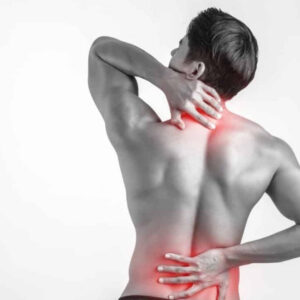Low Testosterone Therapy Options

While testosterone is mainly responsible for the development of reproductive organs, erectile functions, hair production, and lean muscle gain, it has strong impacts on sexual health, and when it is diminished or at lower than optimimal levels, men can see an obvious impact on their sexual wellness.
A deficiency in this hormone due to aging or the body’s production of testosterone into estrogen can allow for some serious physical and psychological symptoms that can be treated in various ways. In many cases, when low testosterone, or Low T, is a diagnosed condition, testosterone therapy is one of the most common treatment options for men.
What is testosterone?
Testosterone is responsible for reproductive functions in males and females, but it is regarded as a “male hormone” because it is produced in much higher levels in males. As they age, their bodies are unable to produce this sex hormone at the speed and levels it used to prior to age 30. This results in a steady decline in the hormone and may lead to a health condition called low testosterone, or low T. The symptoms of low T may be more obvious in men in their 40’s, 50’s, or 60’s.
Causes of Low T
Several factors may be responsible for low T. A primary cause of the condition is hypogonadism, another condition that results in the body not producing enough of the hormone. Hypogonadism is linked to problems with the testicles, pituitary gland, or hypothalamus. Other risk factors of low T are:
• Aging
• Injury to the testicle
• Testicular cancer
• Type 2 diabetes
• HIV/AIDS
• Infection
• Obesity
• Liver or kidney disease
• Radiation or chemotherapy for testicular cancer
• Smoking or alcoholism
Symptoms of low T
The symptoms of this condition vary from individual to individual. Some of them can be quite obvious and may include the following:
• Low sex drive
• Loss of muscle mass
• Low sperm production
• Reduced testicle size
• Increase in body fat
• Enlarged breast
• Hair loss (e.g., head or beard)
• Loss of stamina
• Mood changes
• Hot flashes
• Low energy or fatigue
• Anxiety or depression

Treating low testosterone
Some of the symptoms of low T are similar to other medical conditions. Your hormone therapy physician will need to perform an examination and medical assessment to determine if your symptoms relate to this hormonal condition. Your doctor will test your blood to measure the level of testosterone. A reading of about 300 nanograms per deciliter (ng/dL) or lower is considered outside the normal range.
There was no effective medical recourse for low T prior to the advancement of science and medicine. Statistics show that men lived shorter lives in the 1900s due to low T compared to the 21st century when testosterone replacement therapy and human growth hormone became available treatment options.
Testosterone Replacement Therapy (TRT)
TRT, testosterone replacement therapy, is a process of optimizing testosterone levels. It can be delivered through various forms such as skin patches or pellets, gels, implants, or intramuscular injections. Patients who take TRT reportedly see a significant improvement in their symptoms. For example, energy levels go up, hair regrowth takes place, libido increases, and the ability to get or maintain an erection improves. Some patients say they feel youthful and rejuvenated.
Human Growth Hormone
Low T can also be treated with human growth hormone (HGH). However, males with hypogonadism or low T due to issues with the pituitary gland usually have a deficiency in this hormone. A decline in growth hormone production is also attributed to the natural process of aging.
To boost HGH levels in a safe and natural way, a man-made growth hormone is known as Sermorelin, or sermorelin acetate, can be used to stimulate the pituitary glands into releasing more HGH. Sermorelin is available only by doctor’s prescription. Some of the benefits of this treatment are similar to that of TRT and may also include reduced body fat, improved bone density, increased endurance, improved sex drive, and better sleep.
Alternative treatments for low T
Supplements: A recent study suggests that a daily intake of about 3,300 IUs of vitamin D can naturally bring hormone levels back to normal levels. Increasing the amount of zinc daily is also believed to help boost hormone levels.
Lifestyle changes: Eating a healthy diet, exercising, and maintaining a healthy weight are natural ways to promote the production of the male sex hormone. Your doctor may recommend you include protein-rich foods such as tuna, eggs, peas, and beans. Staying active, regular exercise, and even weightlifting have proven to improve low T symptoms.
Sleep: Lack of sleep is linked to hormonal imbalances in males. Getting about 6-8 hours of sleep each day helps the immune system to function more effectively and can naturally stimulate hormone production.
The Takeaway
It is natural for a hormonal imbalance to occur with age. However, severe low T can produce symptoms that can affect your overall quality of life if it is left untreated. These treatment options can effectively restore hormonal balance. TRT and growth hormone therapy may be suitable only for certain males due to health-related risk factors. It is important to talk to your doctor before boosting hormone levels with TRT or other methods.




